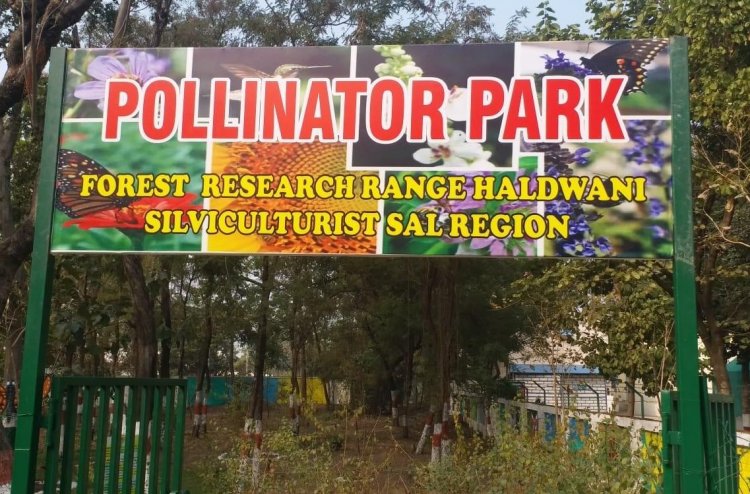Uttarakhand: India's first pollinator park comes up at Haldwani

Dehradun: The country's first pollinator park with over 40 species of butterflies, honeybees, birds and insects has been developedoverfour acres at Nainital's Haldwani.
Developed by the research wing of the Uttarakhand Forest Department, the colourful park was inaugurated on Tuesday by renowned butterfly expertPeter Smetacek, Chief Conservator of Forest (Research) Sanjiv Chaturvedi said.
The objective behind developing the park is to conserve various pollinator species, create awareness among people in general about the importance of conservation of these species and to promote further research on various aspects of pollination, including threat to habitat and impact of pollution on pollinators.
There are at present 40 species of pollinators at the park, includingcommon jezebel, common emigrant, red pierrot, common sailer, plain tiger, the common leopard, the common moron, common grass yellow, common blue bottle, common four ring, peacock pansy, the painted lady, pioneer white, yellow orange tip and lime butterfly.
Suitable habitat has also been created for various pollinators at the park by planting nectar and pollination producing saplings, mostly local ones in clusters, like marigold, rose, hibiscus, jasmine for various honeybee and butterfly, bird and moth species besides host plants to provide shelter to eggs, larvae and pupa, like curry leaf plant, citrus species, cassia species and lantana, Chaturvedi said.
Seasonal flower plants like salvia, aster, cosmos for winter and sunflower, guinea for summers have been planted, he said.
To attract bird and butterfly species, bird feeders and nests have been placed throughout the park with foodgrains and also cut fruits which attract certain butterfly species.
Fruit trees like jamun and shelter trees like neem and semal for various bird species have also been grown at the park. Water bodies have been created and also arrangements have been made for mud puddling for butterflies.
Through mud puddling, butterflies and certain insects like leafhoppers seek out certain nutrients like salt and amino acid from moist substances, Chaturvedi explained.
Dead and dry trees at the park have been left as they are because they serve as important habitat for various types of pollinators like birds, insects and squirrels,he said.
Use of all type of chemicals, including pesticides and insecticides, has been totally stopped at thepark and in the nearby areas.
Pollinators provide pollination services to over 180,000 different plant species. Without them, existing populations of plants would decline, even if soil, air, nutrients, and other life-sustaining elements were available.
"Pollinators affect 35 per cent of global agricultural land, supporting the production of 87 of the leading food crops worldwide, and thus forming the basis of our life," Chaturvedi said, adding that pollinator populationis declining mostly due to loss in feeding and nesting habitats.
Theimportance of pollinators was recognised long back in the west and to conserve pollinators, parks, gardens, strips and pathways were created on a large scale incountries like the USA,he said.PTI ALM















































